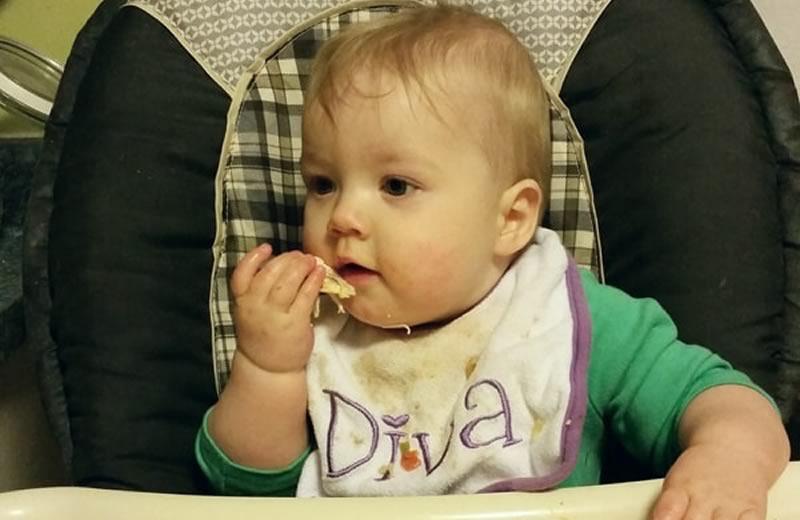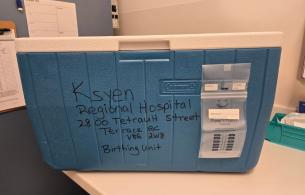I am the mother of an energetic and impish toddler, and have experienced many humbling lessons in my short parenting career. One of my biggest lessons so far is, “You figure something out, and then it changes.”
Take feeding, for example. After an initial learning curve with breastfeeding, my daughter and I got to the point where we were doing really well with it. I appreciated how convenient it became to feed her. Time passed quickly, and around six months of age, it was time to start offering solid food – a whole new chapter with new questions and new learnings.
Good things to know about starting solids:
- There are no hard and fast rules about how to start solids. Pick a couple of times per day to offer solids, either before or after breastfeeding. It can help to include babies at the table during meal and snack times, so that they can learn by watching other people eat.
- Focus on iron-rich foods to start, and offer these foods twice per day (for more information, see pumping iron: First foods for building strong babies).
- When starting solids, babies will likely only eat small amounts. Offer a few small amounts of food a couple of times per day; follow their lead, and offer more if they seem interested.
- At first, more might come back out of their mouth than goes in! It will take some practice before they figure out how to use their tongues to move food into the back of their mouth for swallowing.
- Changes in inputs will result in changes in outputs! Poops will look (and smell) quite different, and the frequency of these outputs will also likely change.
What does starting solids mean for breastfeeding?
In short, the beginning of solids is not the end of breastfeeding.
- When starting solids, mama’s milk continues to be the main source of nutrition. Babies six to eight months of age get about 80% of their calories from breastmilk.
- As they get older, food plays a bigger role. By nine to eleven months of age, babies typically get just under 50% of their calories from breastmilk.
- By one year, toddlers do well with a predictable routine of three meals and two or three snacks per day. Breastfeeding can fit into the day depending on interest and family schedules.
In our case, my daughter started solids at around six months, and by nine months, she was nursing about five times per day (in the morning, after each of her two naps, at bedtime, and once in the night). At eleven months, we stopped nursing at night. Over the next few months, in preparation for my return to work, we dropped the feeds after naps, too. For the past nine months, we have maintained a nice pattern of nursing in the morning and again when I get home from work. It’s a nice way for us to connect.
Everyone’s breastfeeding journey will be unique. I have found it helpful to learn from other breastfeeding moms; I love hearing their stories. Check out a few more stories about breastfeeding on our blog:














Comments